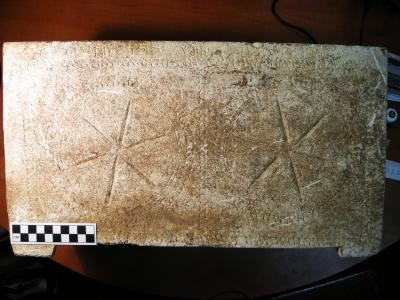2000-year-old Burial Box May Point to Biblical Home of Caiaphas

An ancient burial box recovered from Israeli antiquities looters three years ago contains an inscription that could reveal the home of the family of Caiaphas, a biblical figure who is infamous for his supposed involvement in the crucifixion of Jesus Christ.
The burial box, known as an ossuary, was initially discovered in 1990, but was only recently authenticated. The Israeli Antiquities Authority confiscated the box and turned it over to Professor Yuval Goren of Tel Aviv University's Department of Archeology, who confirmed that both the ossuary and its inscription are legitimate.
Beyond any reasonable doubt, the inscription is authentic, Goren said.
Scientists said the inscription on the ossuary is particularly extraordinary because it includes the name of the deceased within the context of three generations and also reveals a potential location. The full inscription reads, Miriam daughter of Yeshua son of Caiaphas, priest of Maaziah from Beth Imri.
In the biblical story of Jesus' death, a Jewish high priest by the name of Caiaphas is said to have organized a plot to kill Jesus.
The Maaziah refers to a clan that was one of 24 orders of high priests during the second temple period, Goren said. While there are some mentions of the Caiaphas family in Talmudic sources -- the central texts of Judaism -- that details their lives after they spread into Galilee in A.D. 70, the reference to Beit Imri may point to where the family lived before their migration.
Researchers believe the ossuary was unearthed from a burial site in the Valley of Elah, the fabled location of the battle between David and Goliath. Beit Imri was likely located on the slopes of Mount Hebron.
Moreover, Goren said a thorough examination of the limestone box indicates that all the natural processes that should have occurred -- such as erosion by acidic groundwater and biological activity such as the development of bacteria, algae and linchens on the coating of the stone -- were found on the object. Goren said most of these features are impossible to replicate in a lab.
Ossuaries, which are typically made of limestone and contain skeletal remains, are fairly common archeological finds in Jerusalem and Judah, according to a statement from the American Friends of Tel Aviv University. It is not unusual for forgers to add inscriptions or decoration to the ancient boxes to increase their value, which is why it took so long to authenticate the discovery.
In 2002, another ossuary made headlines after researchers said its inscription claimed its inhabitant was James, the son of Joseph and brother of Jesus. Goren said that artifact was revealed to be a hoax, which is why it was so important for researchers to verify the current ossuary as a genuine find.
© Copyright IBTimes 2025. All rights reserved.





















